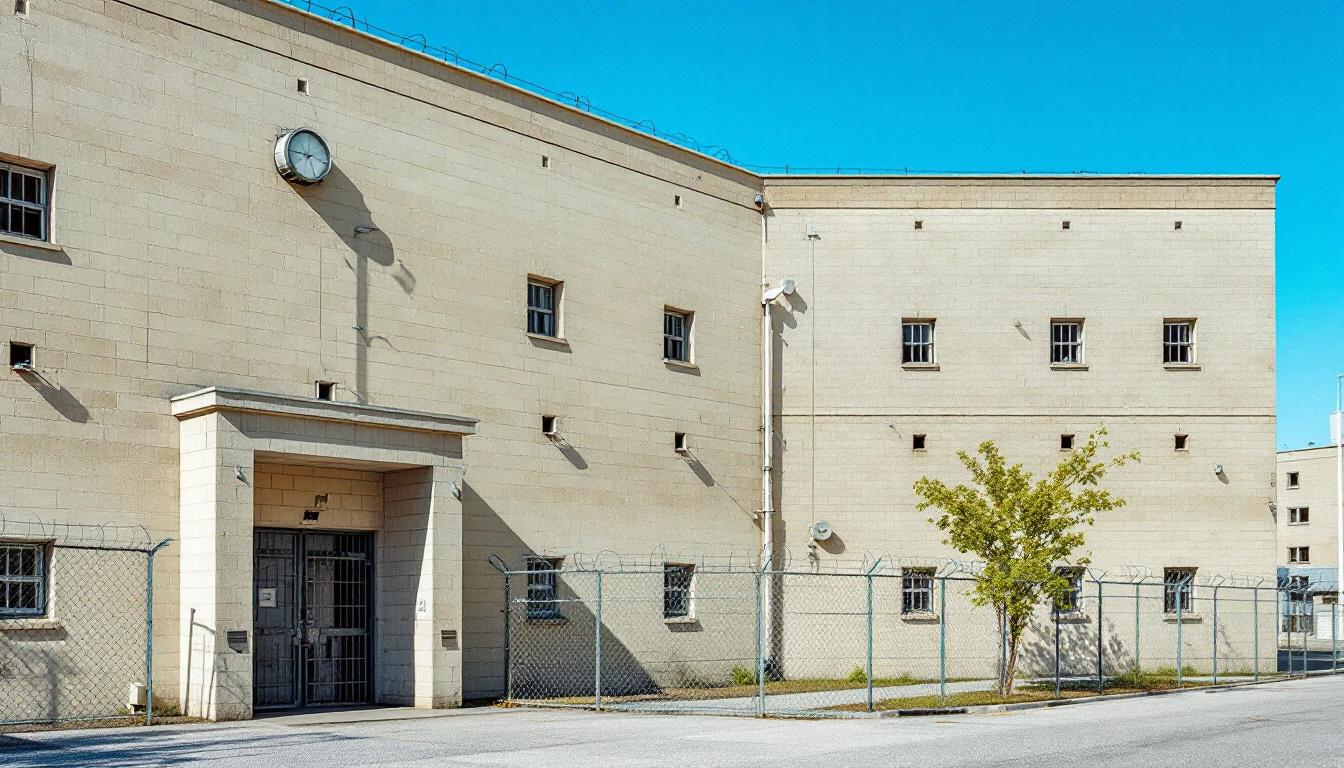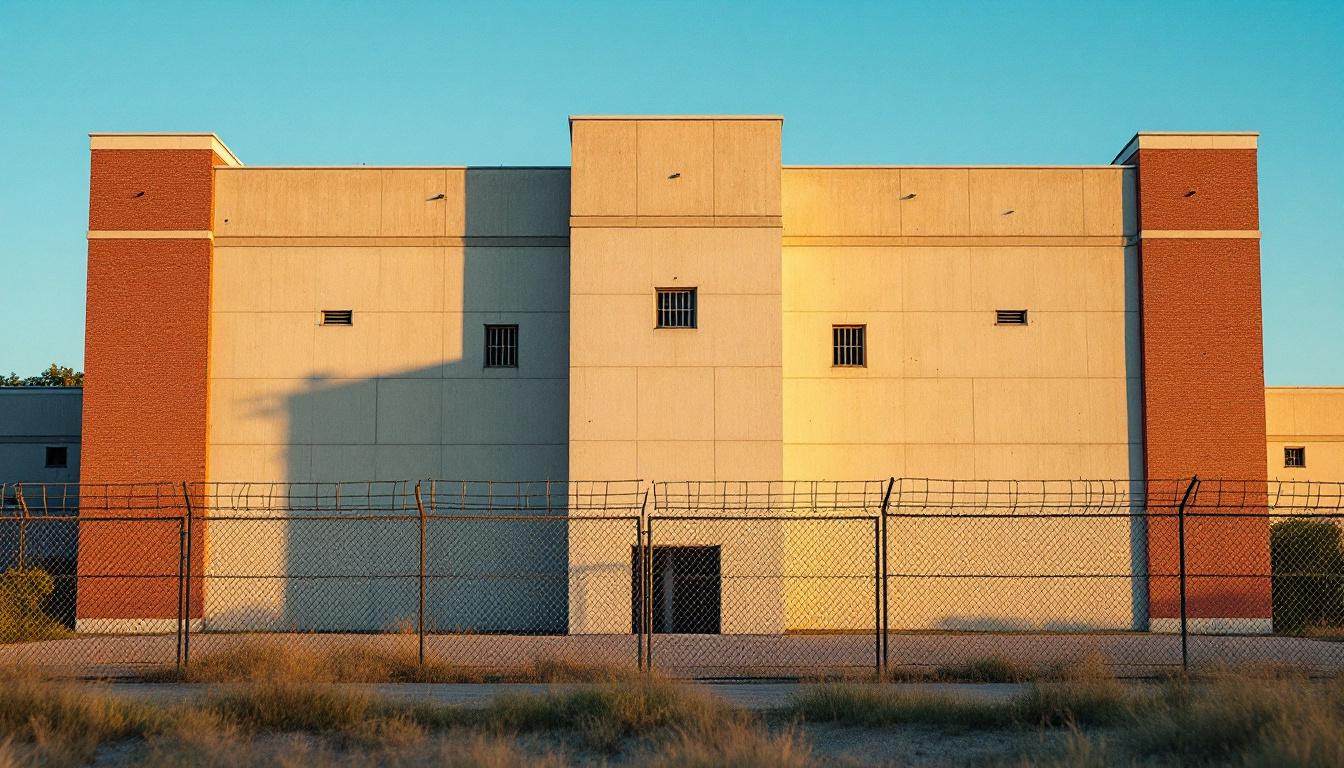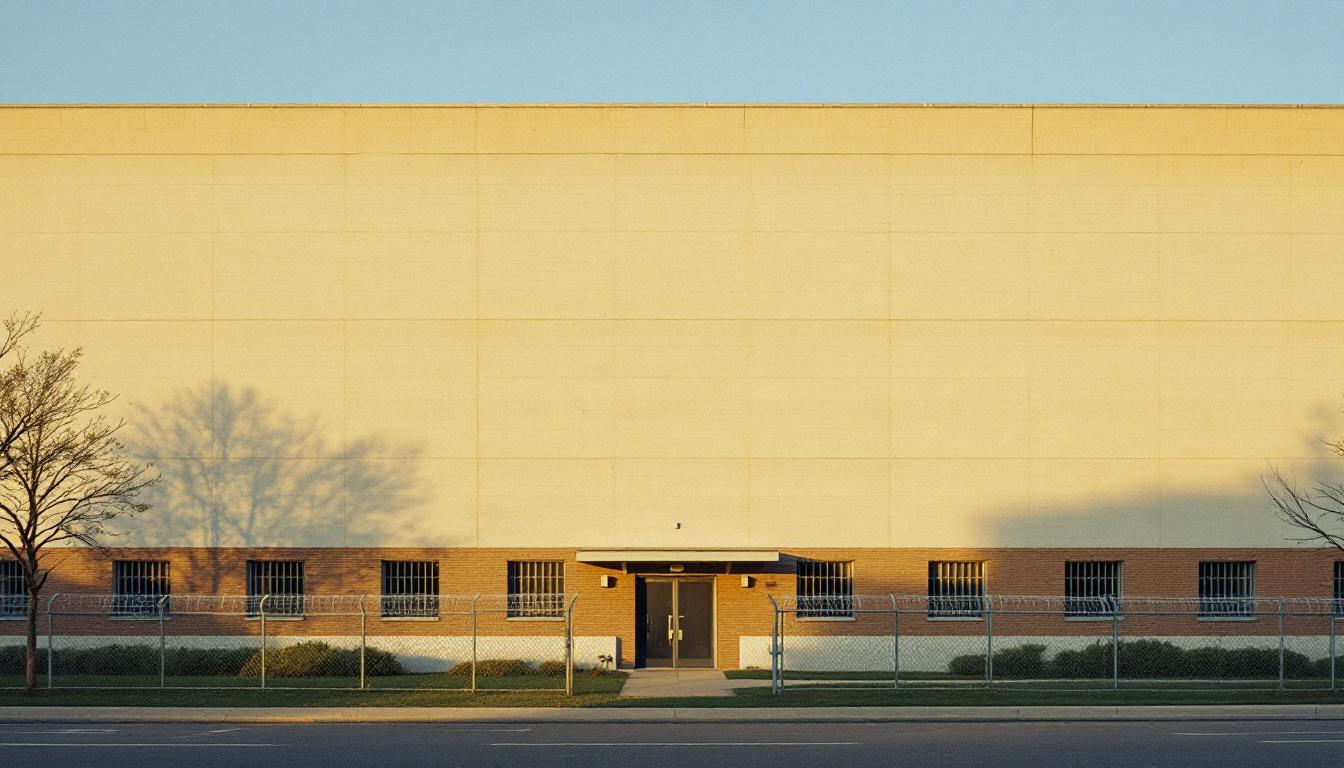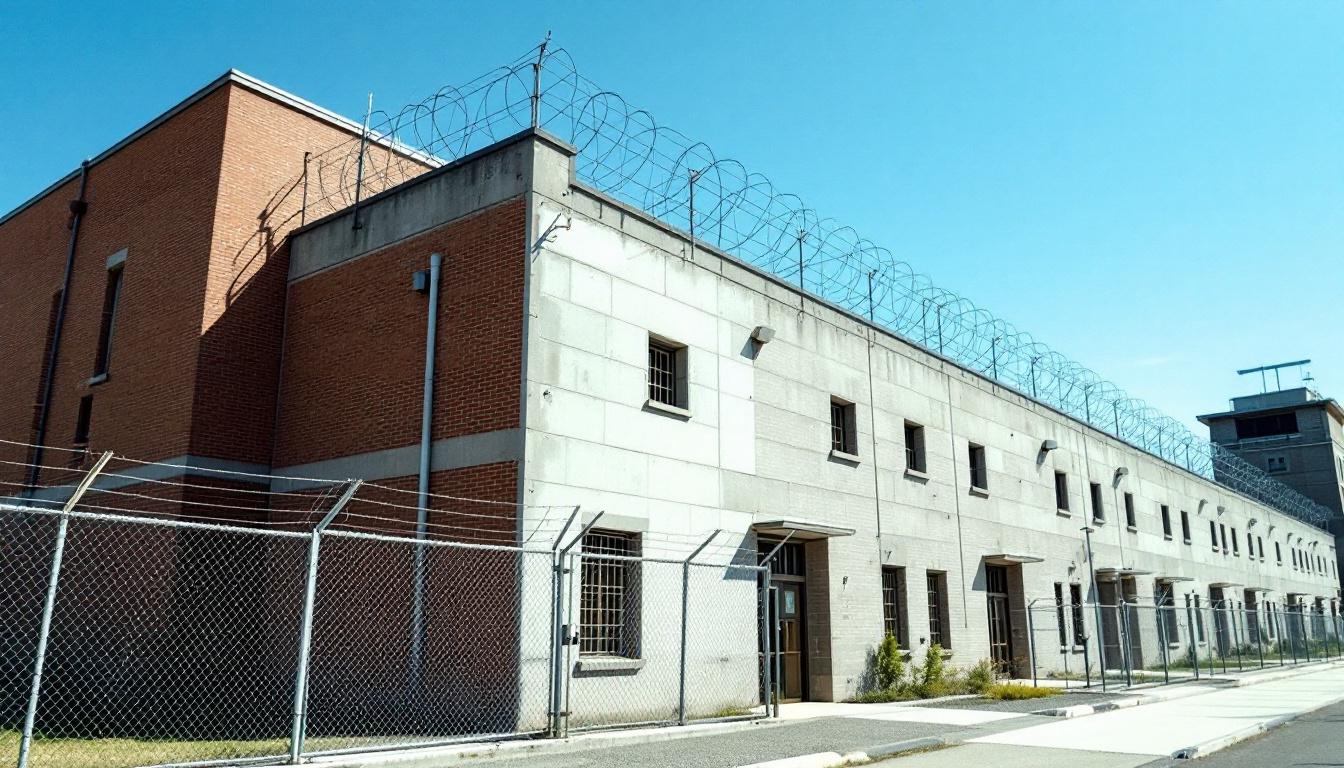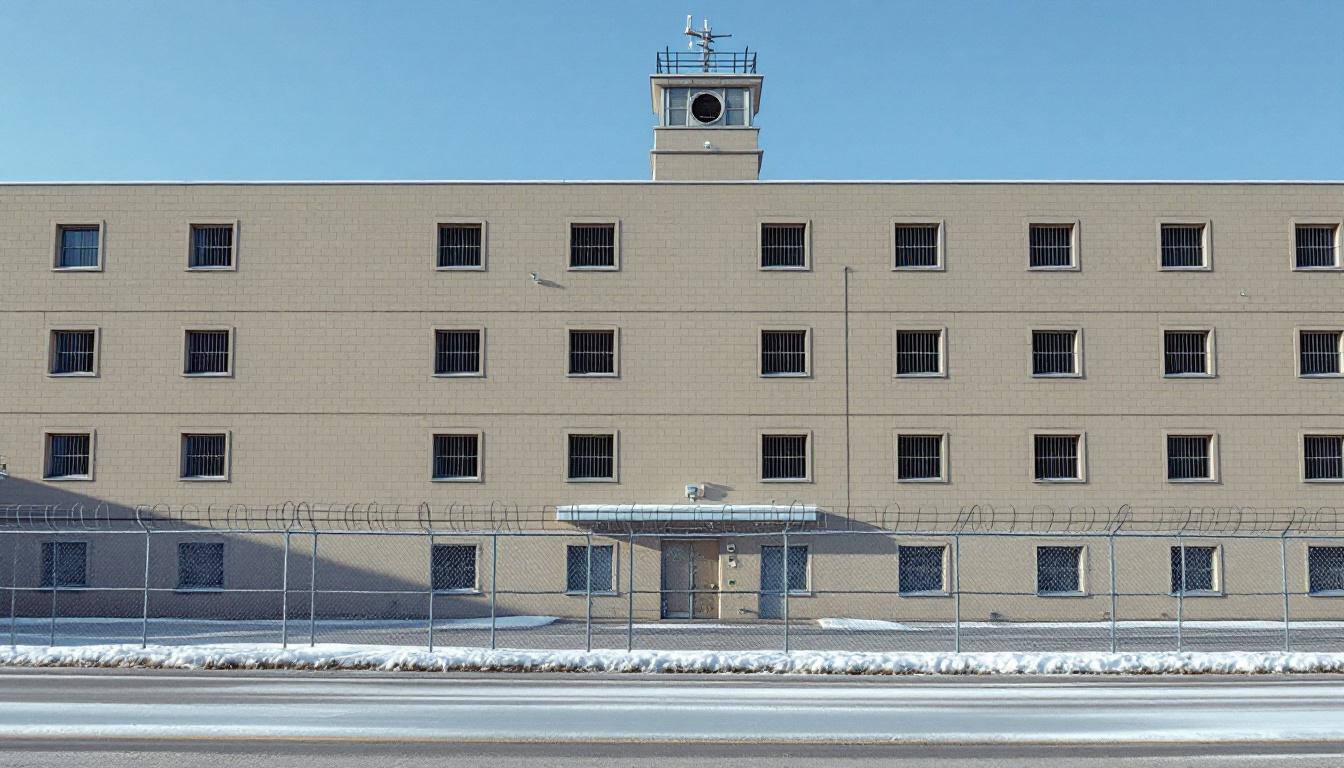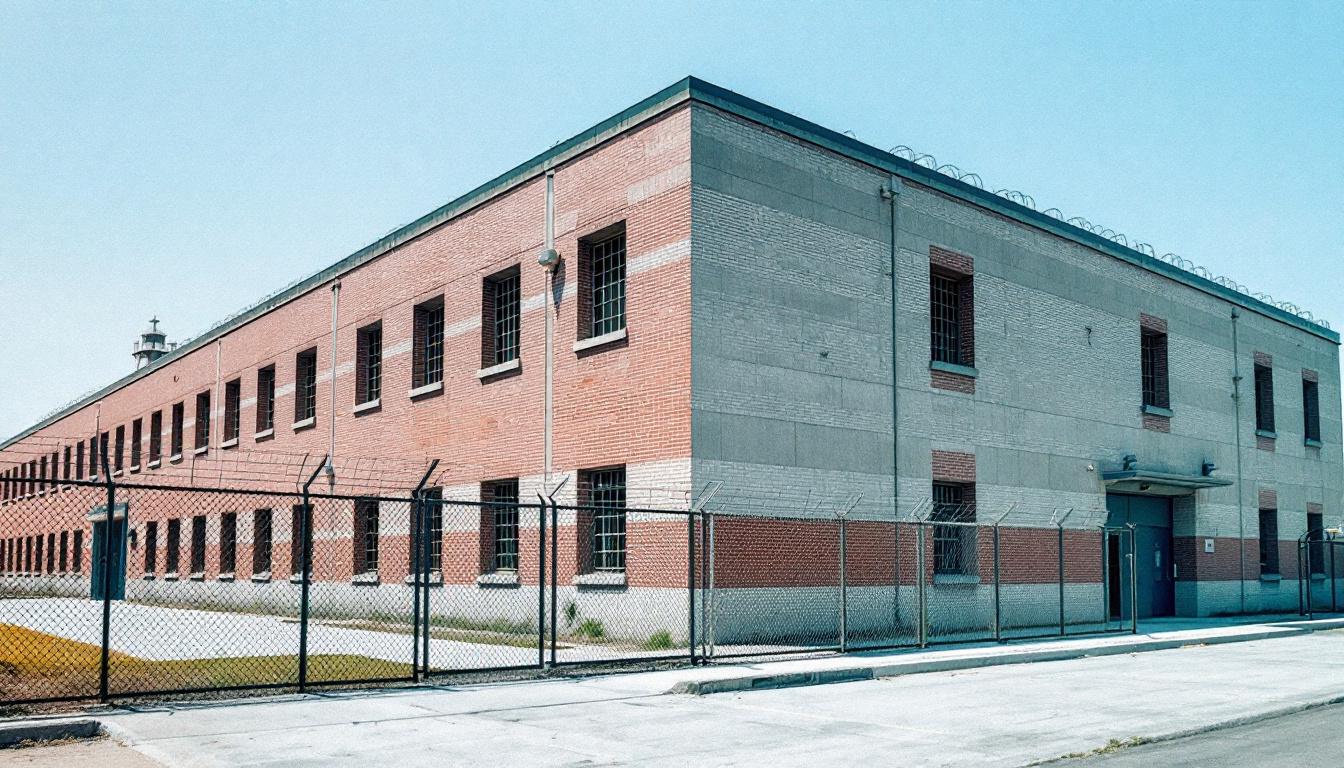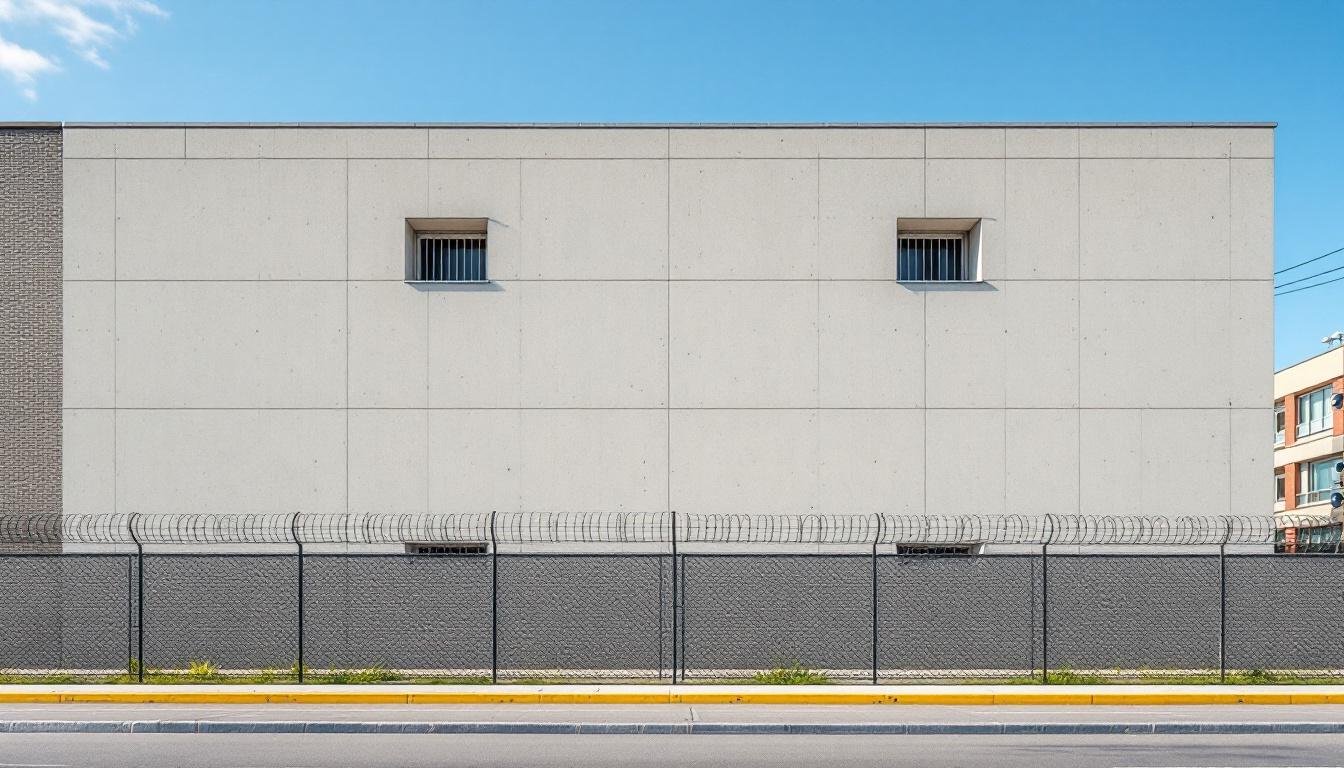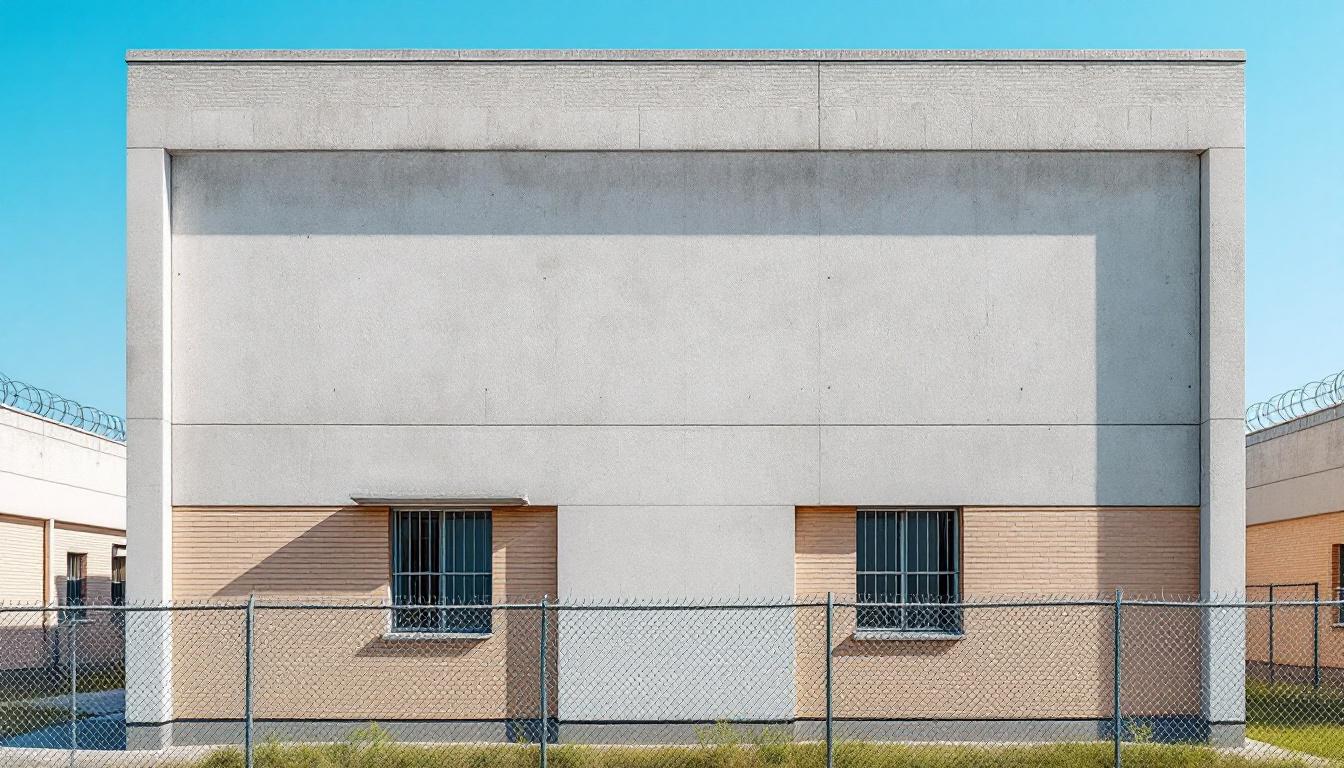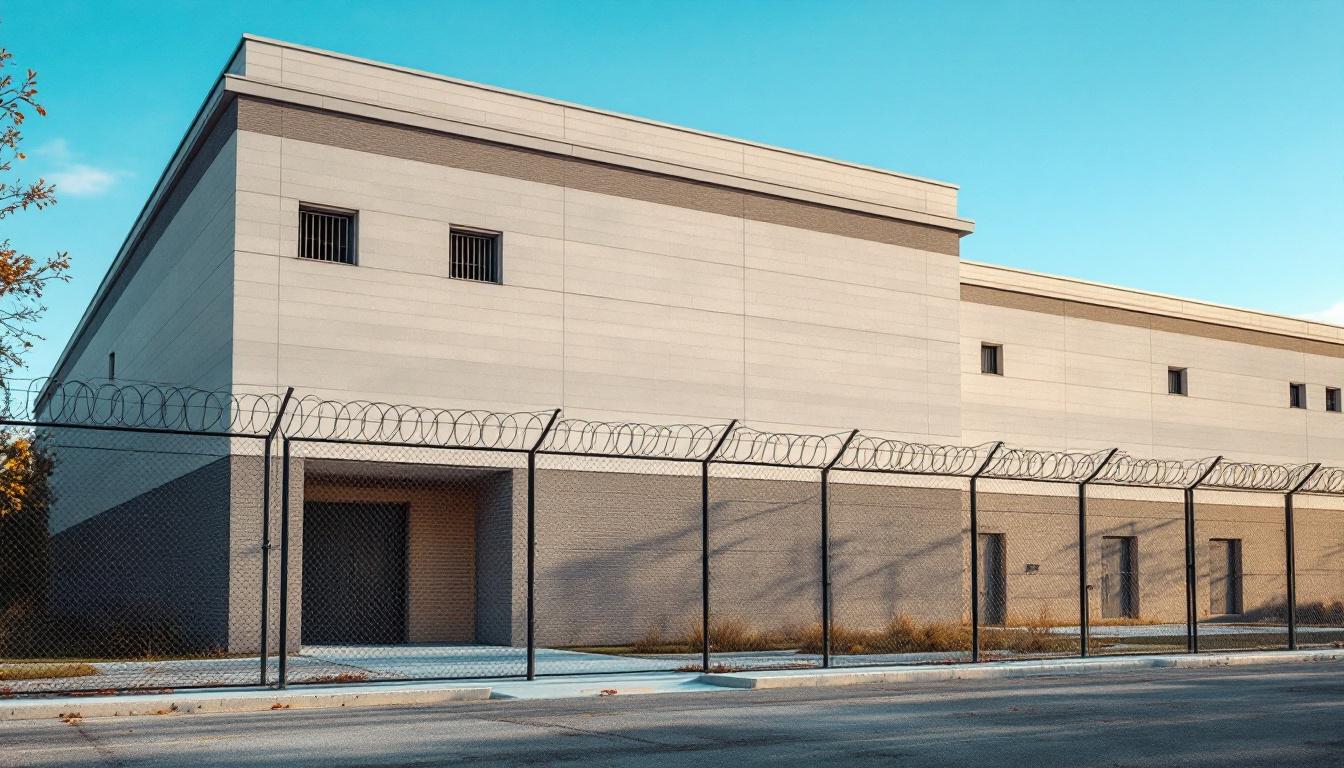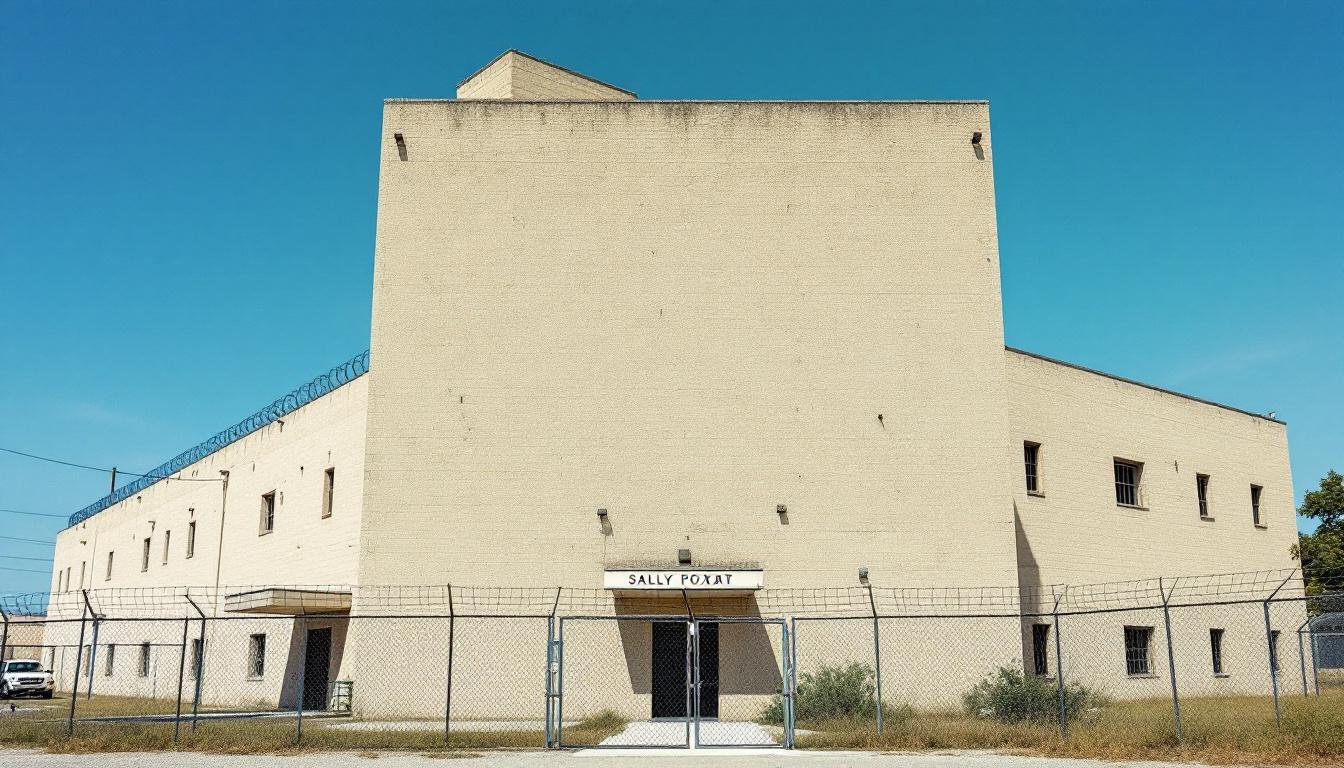
Quick Navigation
How to contact an inmate at Jefferson County Jail (Louisville, Kentucky)
This comprehensive guide will walk you through how to connect with an inmate at Jefferson County Jail (Louisville, Kentucky). Follow the steps below to find an inmate and send letters and photos:
- Search for the inmate using our search tool below
- Create your account or log in to Penmate
- Write your message (up to 6,000 characters)
- Send instantly - inmates receive printed copies daily
Find an Inmate
Search for an inmate to start communicating today
Tip: You can search by first name, last name, or inmate ID number
To contact a person at Jefferson County Jail (Louisville, Kentucky) start by searching for the person on the facility website. Perform a search by following these steps:
- Step 1: Enter their first name and last name into the search form and click "Search"
- Step 2: Locate their inmate record
- Step 3: Write down their Inmate ID and any housing information provided
Important! Be sure to enter the person's full name. Nicknames should not be used.
How to Send Messages to Inmates

You can use your phone or computer to send emails, letters, and photos to an inmate. Messages are sent electronically to inmate tablets or kiosks at the facility. If you would like to send a message, start by searching for an inmate at Jefferson County Jail (Louisville, Kentucky).
Sending Photos and Postcards

A great way to send love and support to a loved one at Jefferson County Jail (Louisville, Kentucky) is to send photos and postcards. It only takes a few minutes to send photos from your phone and it makes a huge difference. You can also mail postcards with words of support and inspiration, or design your own postcard for special moments like birthdays and holidays.
Important! Be sure not to send any explicit photos or they may not be approved by the facility. You can also use a photo printing app like Penmate to make sure your photos are printed at the correct size (4x6 or 3x5) and are mailed according to the rules and regulations of Jefferson County Jail (Louisville, Kentucky).
Frequently asked questions about Jefferson County Jail (Louisville, Kentucky)
-
How long does it take to deliver a message?
If you're sending an email message your letter is usually delivered within 24-48 hours. For messages sent via mail you should expect delivery within 3-7 days. All messages will need be approved by Jefferson County Jail (Louisville, Kentucky).
-
How much does it cost to send a message to Jefferson County Jail (Louisville, Kentucky)?
You can send a message free using your phone or mail a message via USPS for the price of a $0.60 stamp and envelope. You can also purchase credits or e-stamps from services starting at $1.99.
-
What services can I use to contact an inmate at Jefferson County Jail (Louisville, Kentucky)?
Penmate
You can use Penmate to send letters and photos to an inmate from your phone. It's an easy way to stay in touch during your loved one's incarceration. Use the inmate locator to find an inmate's location and contact information, then you can send messages within a few minutes.
Securus messaging
Securus may be another option for communicating with an inmate at Jefferson County Jail (Louisville, Kentucky). You can create a friends and family account and purchase credits to send messages. All messages will be reviewed and must be approved by the facility.
JPay
Some county jails and state prisons may support sending messages with JPay. You must register an account with the system, find your loved one, and purchase stamps to send messages. For some locations you can also attach photos.
Smart Jail Mail
You may also check if Smart Jail Mail is available at Jefferson County Jail (Louisville, Kentucky). Smart Jail Mail is operated by Smart Communications and has contracted with some state and county jails. After purchasing credits, your messages and photos are sent to the facility, printed out, and then handed out to your loved one.
-
What is the mailing address of Jefferson County Jail (Louisville, Kentucky)?
Mailing address:
Jefferson County Jail (Louisville, Kentucky)
514 W Liberty St
Louisville, KY 40202
-
What are the visiting hours at Jefferson County Jail (Louisville, Kentucky)?
Visiting hours at Jefferson County Jail (Louisville, Kentucky) vary by housing unit and security level. Generally, visits are scheduled on weekends and holidays, with some facilities offering weekday visits. Contact the facility directly for the current visiting schedule. Visits typically last 30-60 minutes and must be scheduled in advance.
-
What items are prohibited when sending mail to Jefferson County Jail (Louisville, Kentucky)?
Prohibited items typically include: cash, personal checks, stamps, stickers, glitter, glue, tape, staples, paperclips, polaroid photos, musical or blank greeting cards, hardcover books, magazines with staples, and any items containing metal or electronics. Only send letters on plain white paper with blue or black ink. Photos must be printed on regular photo paper (no Polaroids). Always check with Jefferson County Jail (Louisville, Kentucky) for their specific mail policies.
-
How do I send money to an inmate at Jefferson County Jail (Louisville, Kentucky)?
You can send money to an inmate at Jefferson County Jail (Louisville, Kentucky) through several methods: 1) Online using JPay, Access Corrections, or the facility's approved vendor, 2) Money orders mailed directly to the facility with the inmate's name and ID number, 3) Kiosks located in the facility lobby, or 4) Over the phone using a credit or debit card. Fees vary by method, typically ranging from $2.95 to $11.95 per transaction.
-
Can I schedule a video visit with an inmate at Jefferson County Jail (Louisville, Kentucky)?
Many facilities now offer video visitation as an alternative to in-person visits. At Jefferson County Jail (Louisville, Kentucky), video visits may be available through services like Penmate, Securus Video Connect, GTL, or ICSolutions. Video visits typically cost $10-20 for 20-30 minutes and must be scheduled in advance. You'll need a computer or smartphone with a camera and reliable internet connection. Contact the facility for their specific video visitation policies and approved vendors.
-
What identification do I need to visit an inmate at Jefferson County Jail (Louisville, Kentucky)?
All visitors must present valid government-issued photo identification such as a driver's license, state ID, passport, or military ID. Minors must be accompanied by a parent or legal guardian who can provide the minor's birth certificate. Some facilities require visitors to be on the inmate's approved visitation list, which may require a background check. Contact Jefferson County Jail (Louisville, Kentucky) for specific ID requirements and visitor approval procedures.
-
How can I find out an inmate's release date?
To find an inmate's release date at Jefferson County Jail (Louisville, Kentucky), you can: 1) Use the online inmate search tool if available, 2) Call the facility's records department, 3) Contact the inmate's case manager or counselor, or 4) Have the inmate provide this information during a call or visit. For privacy reasons, some facilities only release this information to immediate family members.
Facility Overview
Contact Information
Jefferson County Jail (Louisville, Kentucky)514 W Liberty St
Louisville, KY 40202

About Jefferson County Jail (Louisville, Kentucky)
County jails throughout Kentucky's correctional network serve as critical detention centers within their respective communities, and Jefferson County Jail, KY operates as an integral component of Louisville's criminal justice infrastructure. This KY correctional facility functions within the broader framework of regional corrections, managing pre-trial detainees and sentenced individuals while maintaining connections to surrounding counties and state-level institutions. The facility's position within Louisville places it at the center of Kentucky's most populous metropolitan area, requiring coordination with multiple law enforcement agencies, courts, and community organizations that comprise the region's justice system.
Operating within Louisville's urban environment, Jefferson County Jail typically manages a diverse population that reflects the city's demographic composition and various legal circumstances. The population services generally include basic medical care, mental health support, and educational opportunities that may be available depending on individual cases and length of stay. The facility often coordinates with local courts to facilitate legal proceedings while maintaining security protocols standard to county-level detention centers. Programming approaches may include substance abuse counseling, vocational training opportunities, and reentry preparation services designed to support individuals transitioning back into the Louisville community.
The jail's role extends beyond simple detention, as it frequently serves as a hub for regional corrections coordination throughout Jefferson County and neighboring areas. Staff typically work with probation departments, social services, and community-based organizations to address the complex needs of individuals within the correctional system. This collaborative approach reflects the facility's understanding that effective corrections involves community partnerships and evidence-based practices that support both public safety and individual rehabilitation goals within Kentucky's evolving criminal justice landscape.
Programs & Services
Through comprehensive support systems designed to address the multifaceted needs of individuals during incarceration, Jefferson County Jail in Kentucky demonstrates a commitment to fostering personal growth and successful community reintegration. The facility's approach recognizes that meaningful change occurs when the population receives access to diverse programming that addresses educational deficits, develops practical skills, and confronts underlying challenges that may have contributed to their circumstances. This holistic philosophy emphasizes empowerment through opportunity, creating pathways for participants to build upon their strengths while developing new competencies.
Educational services form a cornerstone of the supportive programming, typically providing foundational learning opportunities that may include literacy development, GED preparation, and basic academic skill enhancement. The facility often facilitates college correspondence courses, enabling motivated individuals to pursue higher education goals while maintaining their commitment to personal advancement. Additionally, vocational programs supply practical training in various trades and technical skills, with specialized instruction that may include forklift operation certification and agriculture programs that teach sustainable farming practices and land management techniques.
Therapeutic interventions, particularly substance abuse treatment programs, address the complex behavioral health needs prevalent within the population. These evidence-based programs typically incorporate counseling sessions, peer support groups, and educational components that help participants understand addiction patterns while developing healthy coping strategies. The integration of these therapeutic services with educational and vocational offerings creates a comprehensive support network that recognizes the interconnected nature of personal challenges, ultimately preparing individuals for more successful transitions back to their families and communities upon release.
Daily Life & Visitation
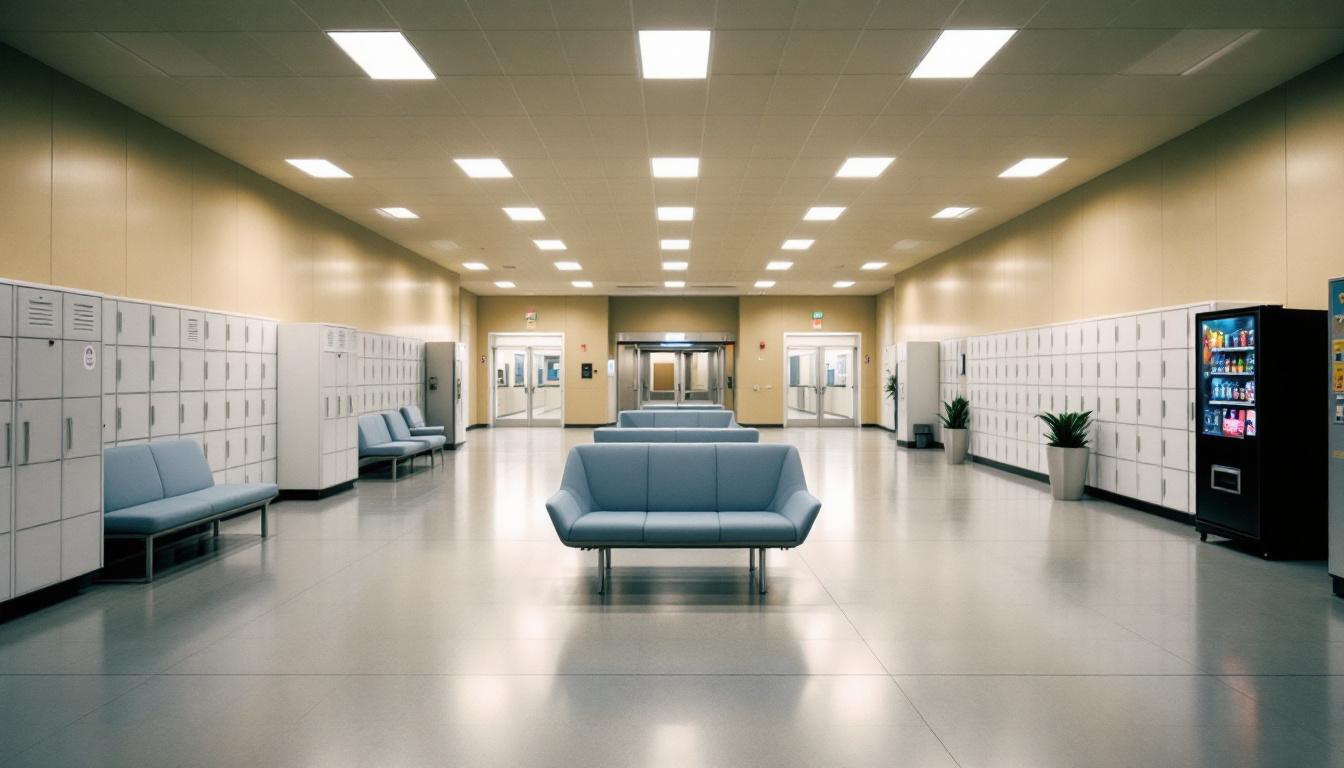
A carefully structured organizational framework shapes every aspect of life within the facility, where systematic routines and clearly defined protocols create predictability for the population. Daily operations currently follow established schedules that continue to provide structure through consistent meal times, programming periods, and supervised activities. The facility typically maintains order through a combination of housing unit management and coordinated movement throughout different areas, ensuring that residents understand expectations while maintaining appropriate security measures.
Living accommodations generally consist of housing units designed to manage the population effectively, with residents assigned to specific areas based on classification levels and individual circumstances. The facility usually provides basic furnishings and personal storage space, while commissary services may offer additional items for purchase. Meals are typically served in designated dining areas or housing units, following nutritionally planned menus that accommodate various dietary requirements. Additionally, personal property policies generally allow residents to maintain limited personal items while adhering to security guidelines.
Structured programming schedules often supply educational opportunities, recreational activities, and work assignments that help maintain daily routines and provide constructive engagement. Recreation time may include access to exercise areas, television viewing, and reading materials, while work assignments typically involve facility maintenance, kitchen duties, or other operational support roles. While maintaining security protocols, the facility generally facilitates family connections through scheduled visitation periods and telephone access, recognizing the importance of maintaining supportive relationships. Communication options usually include both in-person visits and phone calls, with specific scheduling procedures that help families stay connected with their loved ones throughout their stay.
Ready to Connect?
Start communicating with your loved one today
Search for an Inmate
